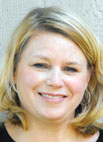
Paul and Colleen Thornton together with their partners Carl and Sue Riccelli farm the acreage whose produce and product line are quickly becoming the hallmark of sustainable family farming, providing multiple products available from their website, at the Cherry Street Farmers Market in Tulsa, Okla., as well as the Farmers Market in Tahlequah, Okla., and via the Oklahoma Food Coop.
The farm is halfway between Tahlequah and the Arkansas border. The 60 acres has been in production since just after the Cherokee Trail of Tears. The land was, in Colleen’s words, ‘played out.’ Bringing back the land using compost and sustainable practices is essential, and is monitored by twice a year soil testing.
The original acreage had four ponds, five more have been created, not deep enough to fish, but deep enough at 6 feet to hold water as catchments against the persistent drought.
Production beehives yield honey for sale and honey for use in creating their handcrafted goat milk and honey soaps. All the animals are handled with as little stress as possible, as stressed animals do not produce the quality product the Thorntons are looking for.
A few yards from the beehives, alpaca gather under the trees. Once a year they will be sheared, by a professional (again to minimize trauma) and their wool will contribute to the farm’s yarn revenue.
As a dietician, holding an MBA in finance, Colleen has developed product lines to fill thoughtfully researched niche markets.
The herd of Merino sheep, wearing jackets to protect their $25 a pound wool, produce a thick lanolin rich wool that will be hand carded, hand spun and hand dyed before being offered for sale in an upscale shop, at market or on the web.
The playful, heat resistant Nubian goats generate milk to blend with the hive’s honey and produce a specialty line of soaps marketed with the farm’s name and a portrait of their favorite Nubian on the box. The fine milled soap is marketed through their website, at farmer’s markets and co-ops as well as being made available through SUPERCUTS and Fresh Markets.
Meeting the market request for young pigs, meat animals are bred from the farm’s Hampshire boar, Arnie. Arnie’s excellent confirmation means his offspring are sold before they hit the ground. It also means he is in sufficient demand as a sire to look forward to AI sales to augment income. The Thorntons keep Arnie in an acre paddock, reducing the stress that could make the 600 plus animal dangerous to handle.
In a far pasture, a Jersey tends her calf – her butter rich milk is at times offered as raw milk sold only off the farm, due to milk laws. In the immediate future, plans are being made to grow feed for the herd animals to promote the farm’s self-sufficiency and reduce dependence on possible imports of round bales.
But what the public sees visiting the Farmers Market are vegetables grown from heirloom seeds. Seedlings sprout under grow lamps in the house, then the seedlings are moved to one of the small hoop houses heavily tarped to minimize heat loss. There the transplants grow in vigorous green rows on fish emulsion added to the watering system. Market vegetables grown in plots, thrive in single long rows under plastic to conserve water and minimize the difficult and labor intensive weeding that goes along with any garden. The plastic cannot be reused. But the plastic warms the soil, and brings produce early to the market. An easy gauge to their success in reclaiming the worn out land is the 1,000 percent increase in earth worm population – who continue to churn the soil and increase permeability.
Inside the house, Sue Riccelli, a quiet shy woman warmed up on the subject of hand dying. The hand carded, hand spun wool is dyed in small lots to earth warm colors ranging from Raspberry Beret to muted oranges, bronze and the astonishing Chameleon which appears different colors in different light.
Animal populations on the farm complement each other: guinea fowl reduce tick populations, a large flock of chickens free-range producing both eggs and meat for the table.







